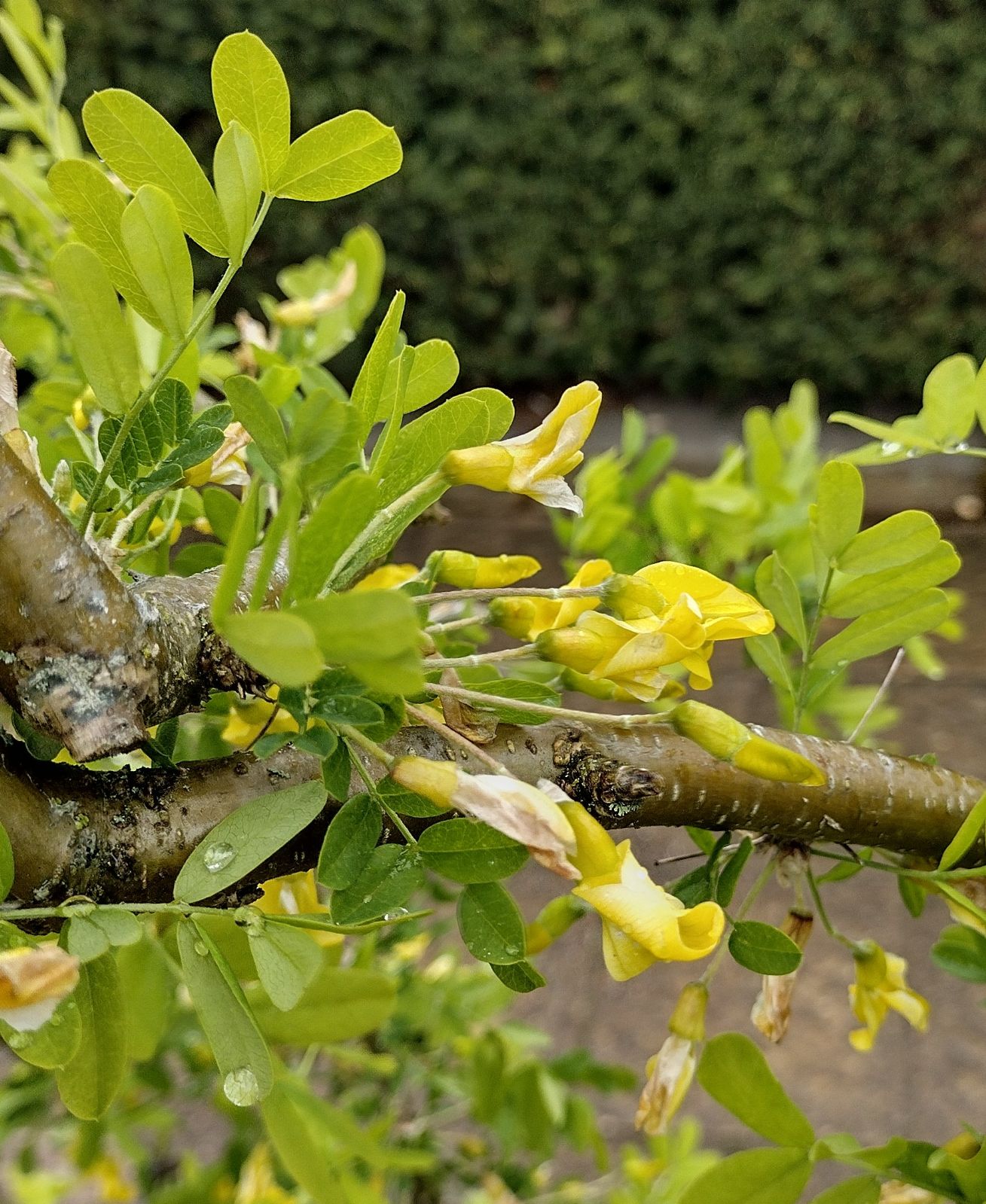Caragana arborescens
Credits
Article from Bean's Trees and Shrubs Hardy in the British Isles
Recommended citation
'Caragana arborescens' from the website Trees and Shrubs Online (treesandshrubsonline.
Genus
Common Names
- Pea-Tree
Infraspecifics
A deciduous shrub up to 15 and 20 ft high, of rather erect, sometimes almost fastigiate habit; by pruning away the lower branches and training up a leading shoot, it may be made to take the form of a small tree; bark on young branchlets slightly winged. Leaves 11⁄2 to 3 in. long, equally pinnate, consisting usually of four to six pairs of leaflets (more on young or exceptionally vigorous shoots); leaflets oval or obovate, 1⁄3 to 5⁄8 in. long, becoming nearly or quite glabrous; the main-stalk ending in a bristle-like spine. Stipules linear, spine-tipped, developing ultimately into a pair of stiff spines at each joint, 1⁄4 in. long. Flowers yellow, produced singly on thin, downy stalks from 1⁄2 to 11⁄2 in. long, several coming from each of the enlarged scaly buds on the previous year’s wood. Each flower is 5⁄8 to 7⁄8 in. long; calyx cup-shaped or tubular, five-toothed, with hairy margins; standard petal not expanded but curled backwards at the sides. Pod 11⁄2 to 2 in. long on a slender stalk about the same length, smooth, cylindric, and carrying three or five oblong seeds, the calyx adhering at the base.
Native of Siberia and Mongolia; introduced in 1752. This is the commonest of the caraganas in gardens, and is a vigorous, free-growing shrub. Its long, sparsely branched shoots give it a distinct appearance, and although not one of the showiest of the broom family it is very pretty in early May, when the yellow flowers are associated with the tender green, almost fully formed leaves. It produces good seed in abundance. The species shows several different forms, especially in habit, of which the following are the most distinct.
From the Supplement (Vol. V)
† cv. ‘Walker’. – Branches steeply pendulous as in ‘Pendula’, foliage as in ‘Lorbergii’ but somewhat finer. This is the result of a cross between these two cultivars, raised at the Morden Research Station, Manitoba, Canada, and selected by Professor J. Walker (Dendroflora No. 15/16, pp. 61–2 (1979)). It has been introduced to Britain.
C boisii Schneid.
Synonyms
C. microphylla var. crasse-aculeata Bois
C. arborescens var. crasse-aculeata (Bois) R. J. Moore
C fruticosa (Pall.) Steud.
Synonyms
Robinia altagana var. fruticosa Pall.
C. redowskii DC
C × sophorifolia Tausch
Synonyms
C. cuneifolia Dipp.
C. arborescens var. cunetfolia (Dipp.) Schneid
'Lorbergii'
A remarkable variety with very narrowly linear, pointed leaflets, {1/25} to {1/12} in. wide, {1/4} to {3/4} in. long. The wing-petals and the standard are also much narrowed. In flower beauty it is inferior to the type, but the remarkable foliage (resembling the ultimate divisions of a fennel leaf) makes it well worth growing. It was raised in Lorberg’s nurseries, Germany, and introduced around 1906.'Nana'
A dwarf, stunted bush, with stiff, contorted branches which grow very slowly. It is usually grafted on the type, from which it does not differ in leaf and flower. A quaint-looking shrub.'Pendula'
Branches stiffly pendent, but not ungraceful. This cultivar is usually grafted on standards of the type. Foliage and flower the same. Described by Carrière in Flore des Serres, vol. 11, 1856, p. 165.


